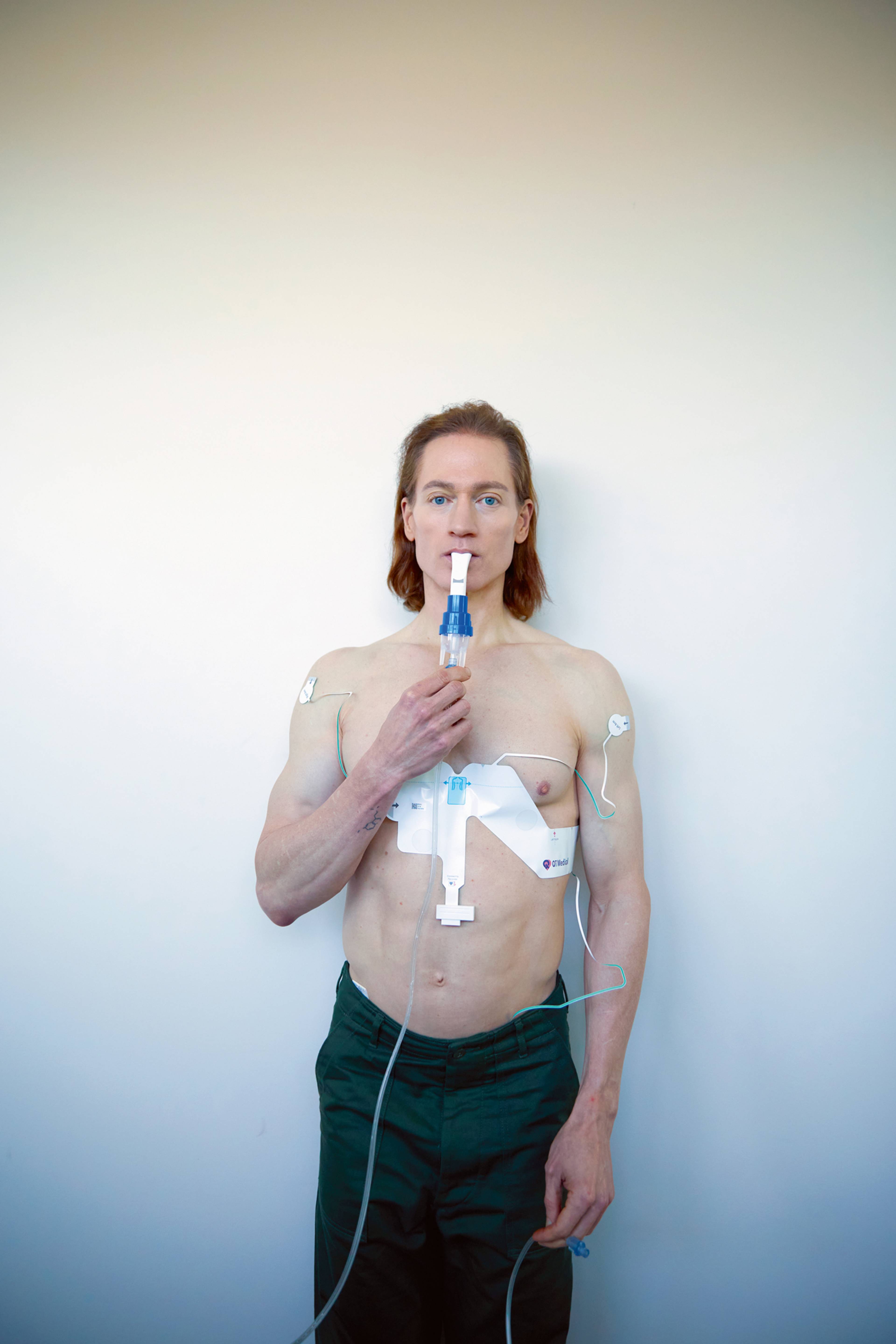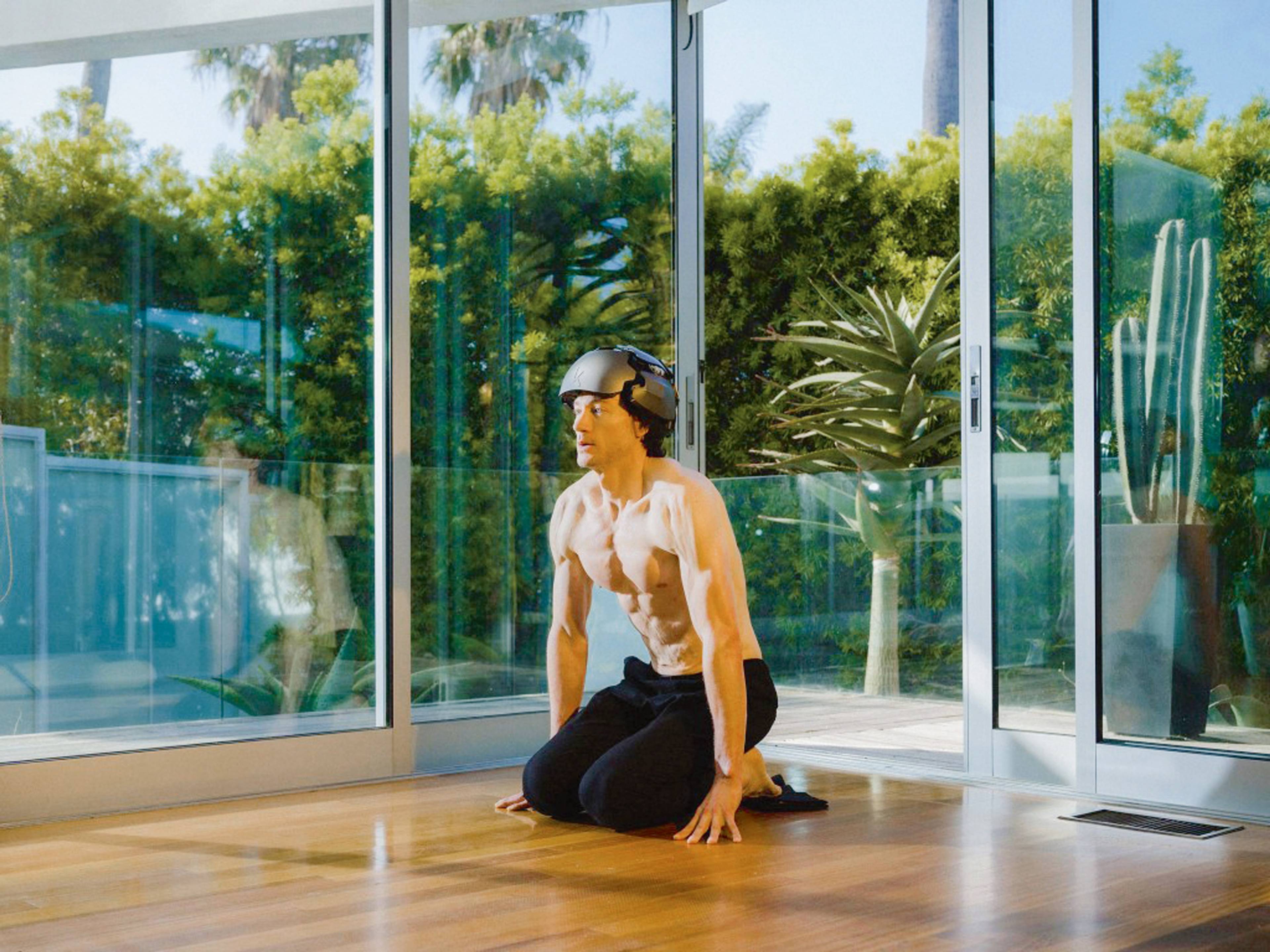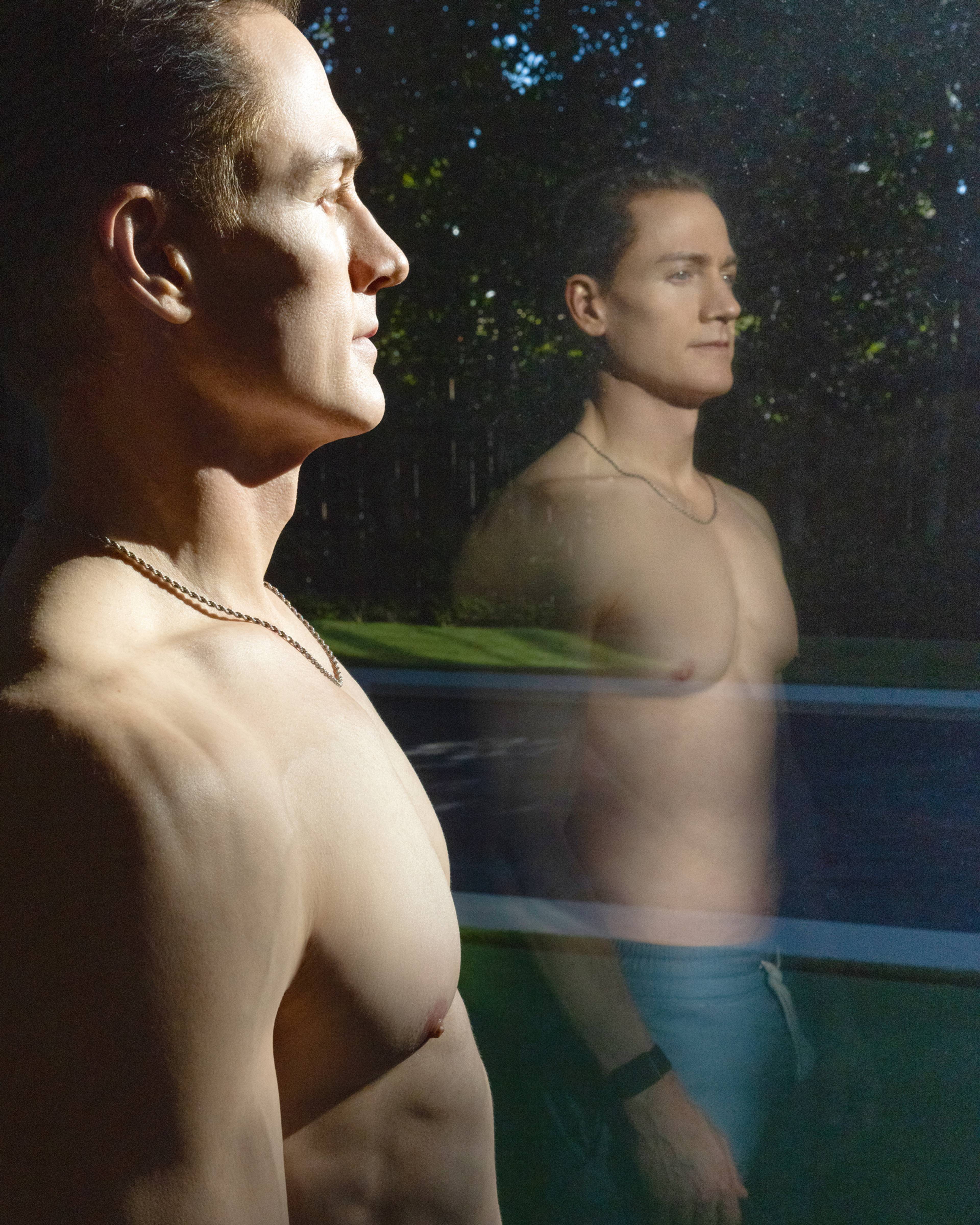There’s an old adage, commonly attributed to Benjamin Franklin, that only two things in life are certain: death and taxes. Silicon Valley libertarians have long been concerned with evading the latter – but recently, they’ve declared war against the former, too. The tech industry has not, historically, been known for promoting a healthy lifestyle. More likely, it conjures images of mechanical keyboards and Mountain Dew – the sort of thing depicted in Jon Rafman’s series “You are Standing in an Open Field” (2015). But this stereotype is shifting as startups recognize that longevity is a growth sector. Now, even nerds can strive to transcend the Cartesian split – or, at least, to direct their math skills towards the optimization of their bodies – through biohacking – or their lifespans – through a new generation of “longevity” technologies. The tech elite are cracking the code on living forever.
At first glance, the Silicon Valley-spawned movement towards “longevity maximalism” is less grandiose than certain other quests for eternal life that the über-wealthy have historically pursued. Computer scientist Ray Kurzweil, for instance, has famously stated his wish to be cryogenically frozen, his body preserved until the singularity occurs and his consciousness can be merged with AI. The flavor of death-defiance growing in popularity today is a comparatively humbler strain of biohacking, more spreadsheet humdrum than science fiction. It asks how data-driven insight could help people live healthier, longer – with a wink and a nod to the provocation that, at a certain threshold, “longer” turns into “forever.” This movement, made possible by wearable sensors and AI-synthesized insights, is geared towards “optimizing” lifestyle, figuring the habitus of daily life as a series of “stacks” and “protocols.” The woo-woo of wellness culture is replaced with the diamond-solid certainty of data, promising to cure death – the ultimate disease.
Perhaps the most visible evangelist of the life-extension gospel is startup founder and venture capitalist Bryan Johnson. An ex-Mormon, Johnson renounced a faith that promised a planet to himself in the afterlife, insisting he can have it all, now, in this lifetime, forever. He has been known to quip that Jesus is his biggest rival. Like so many Western depictions of Christ, he is long-haired, lily-white, and often depicted shirtless. He has two sartorial signatures: painted fingernails and a black T-shirt, the latter tight against his meticulously exercised torso, emblazoned with the phrase “DON’T DIE.” When he was twenty-four, Johnson founded a payment-processing company that he later sold to PayPal, only to keep rapaciously grinding, like any capitalist proving his grit. But work didn’t love him back. By his mid-forties, Johnson was rich, stressed, and out of shape – burnt out from the demands of his round-the-clock lifestyle.
Photo: Damien Maloney
Johnson often depicts himself shirtless. Photo: Magdalena Wosinska
So, at forty-seven, Johnson began attempting to engineer a protocol for immortality: Project Blueprint. It’s patterned on intensively monitoring his own body: Through biometric wearables and regular lab tests, he has spent three years (and four million dollars) tracking his physical metrics in every way possible. The data he gleans is crunched by human doctors and fed to AI models to determine the “optimal” diet, exercise, and supplementation regime. He awakens at 5am and promptly measures his body composition, before staring directly into a lamp that mimics the effects of the sun. He takes 111 supplements (red yeast rice, curcumin, prebiotic galactooligosaccharides); stops eating at 11am; and turns in nightly for an 8:30pm bedtime, smiling a Buddha’s smile at the prospect of doing it all over again the next day.
Every element of his lifestyle has been meticulously refined – a bit through medical wisdom, but largely thanks to AI. Project Blueprint’s proprietary innovation is what Johnson calls “an algorithm that takes better care of me than I can myself.” Since handing over his self-care routine to the benevolent algo, Johnson appears to have achieved impressive cellular rejuvenation. He publishes real-time updates on his biometric data to his website, including claims like having achieved a “speed of aging slower than 99% of 20-year-olds” and boasting that he averages 179 minutes of nighttime erections.
And even if we could transcend our bodies’ limits wholesale, based on medical insights from one white guy, how would we spend those additional twenty, fifty, one hundred years? Paying rent in perpetuity?
The numbers don’t lie. The man is relentlessly optimized. And, like any good prophet, his wisdom is packaged to share. For those who don’t have four million dollars to invest in a bespoke AI system but still want the benefits of a longer lifespan (and an interminable nightly erection), Johnson has developed a line of supplements, condiments, powders, and potions: olive oil, creatine, drink mixes, a thirty-seven-dollar blend of nuts and dried blueberries. Their glistening promises are conveyed in nonsense copy: “DIAMONDS CHEAPER THAN ALL THE TRASH THAT’S AVAILABLE IN THE MARKET,” reads one for a Kool-Aid-red beverage powder (retail price: forty-nine dollars). These products’ appeal touches on something tender and present: Show me a person who doesn’t feel bad, stuck in a body that hurts sometimes, their aches aggravated by the repetitive stress of one labor or another, intensifying until they eventually die. The realities of embodiment are bleak enough that I don’t blame anyone for wanting to entrepreneur them away.
But how universal, capacious a “blueprint” is Johnson’s answer to life’s most centrally insoluble problem? Right now, the product line is limited to physical goods (and a few free paragraphs on daily habit optimization), developed based on Johnson’s self-surveillance – no custom benevolent AI for us weirdos who desire our own digital superegoes. Not inconsequentially, what Project Blueprint presently lacks is customizability, no consideration apparently having been granted as to whether the insights patterned on Johnson’s own body translate to others’ – to ones with chronic illnesses, menstrual cycles, or the litany of other needs that lie beyond his own (expanded) limits.
In 2023, Johnson performed the world’s first “multigeneral plasma exchange” with his seventeen-year-old son and seventy-year-old father. The procedure, authorized by his team of thirty doctors, was an attempt to reduce the age-related decline of the brain.
300 million young Swedish bone marrow mesenchymal stem cells were injected into Bryan Johnson’s shoulders, hips, joints. The aim: joints to match his total bone mineral density, which is in the top 99.8% for thirty-year-olds. © Bryan Johnson
And even if we could transcend our bodies’ limits wholesale, based on medical insights from one white guy – or even eke out modest gains in life extension – how would we spend those additional twenty, fifty, one hundred years? Paying rent in perpetuity? Working overtime to afford a twelve-hundred-dollar-per-month food and supplement stack? “Longevity maxis” see death as a technical problem, but have yet to iron out certain bugs in the social software – like the problem of saving for a century-long retirement. Johnson optimistically deflects to the hope that AI will address our financial woes, too, conjuring Fully Automated Luxury Communism: Life Extension Edition. Contrast this with the hand-wringing so preoccupying a different breed of rationalist: the fear that, left unchecked, AI’s acceleration poses an “existential risk” to our species.
Maybe the utopian vision of AI-assisted immortality is an attempt to repress these anxieties – or the many other well-founded worries that attend living in our crisis-ridden world. Living is scary, but dying is scarier; right now, both are inevitable. No wonder “wellness” has long been so easily commodified, even in its less technic forms: It’s comforting to imagine that, for those of certain means, the Grim Reaper can be repelled with priceable products, from Erewhon smoothies to Aura rings. Perhaps that’s why the trend-
forecasting group Nemesis recently predicted that the “health-and-longevity industrial complex” could soon eclipse fashion brands like Balenciaga in terms of cultural prominence. Johnson has indeed infected Demna’s social graph: He hosts celebrity-studded “Don’t Die Dinners” (an incoherent title for events given by a man who famously stops eating before noon), including one recently attended by the Kardashians; over the summer, he was profiled in the fashion magazine 032c, alongside Rosalia and THE WEEKND, bookended by ads for luxury streetwear.
Bryan Johnson may be the self-proclaimed “most measured man in history,” but nobody ever asks him how he feels.
Yet something sets this tech-spawned vision apart from older (if equally commodified) kinds of wellness. Silicon Valley’s adventures in biohacking are built on an understanding of health qua data. Doing away with the inefficiency of thought or feeling, they cultivate the paranoid belief that subjective desire can only ever steer you wrong. Whereas many equally ridiculous health products – take, for instance, Céline’s pilates reformer machine – still ostensibly aim towards mind-body harmony, these tech-aided forays into biohacking make interoception obsolete. It’s tragic, when you think about it: Bryan Johnson may be the self-proclaimed “most measured man in history,” but nobody ever asks him how he feels. Like the anorexic who eventually loses her hunger cues, the biohacker only thrives insofar as he overrides his body’s intrinsic system for signaling demand and desire. But data is not the same thing as wisdom. Even Gwyneth Paltrow, the matron saint of the wellness market as we know it, admits to occasionally indulging in the jouissance of mindfully smoking a single cigarette, come the end of a long week of shilling holistic skincare.
While it may market itself as “life extension,” the breed of biohacking gaining traction embodies what the 20th-century philosopher Theodor Adorno once referred to as “the sickness of the healthy.” Adorno, a very unhappy camper in mid-20th-century Los Angeles, found the obsessional pursuit of health in Californian culture to stink. It stunk like death, and indeed embodied a kind of Thanatos: an impulse to negate, to trim, to reduce; to do away with the eccentricities that characterize actual human life. Vibrant and vital only so far as he can be quantified, Johnson reeks of lifelessness: a life so strictly determined cannot possibly be all that lively, even if it lasts forever. Is this really living? And by whose standards? In the terminal phase of the lifestyle brand, immortality – humanity’s oldest utopian project – repackages the death drive as just another multi-level marketing scheme.
— This text was originally published in print in Spike #81/82 – The Post-Cool under the title “Hacking Death.” You can buy your copy in our online shop —






